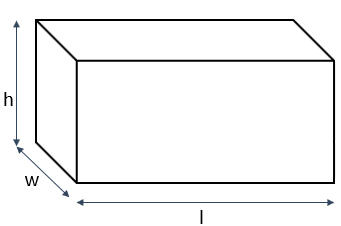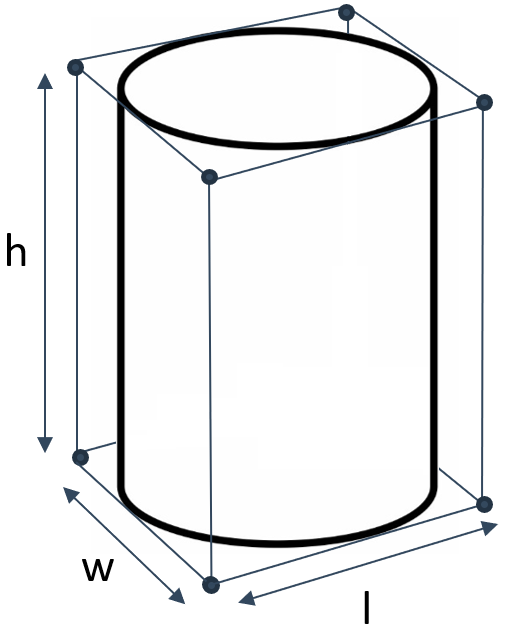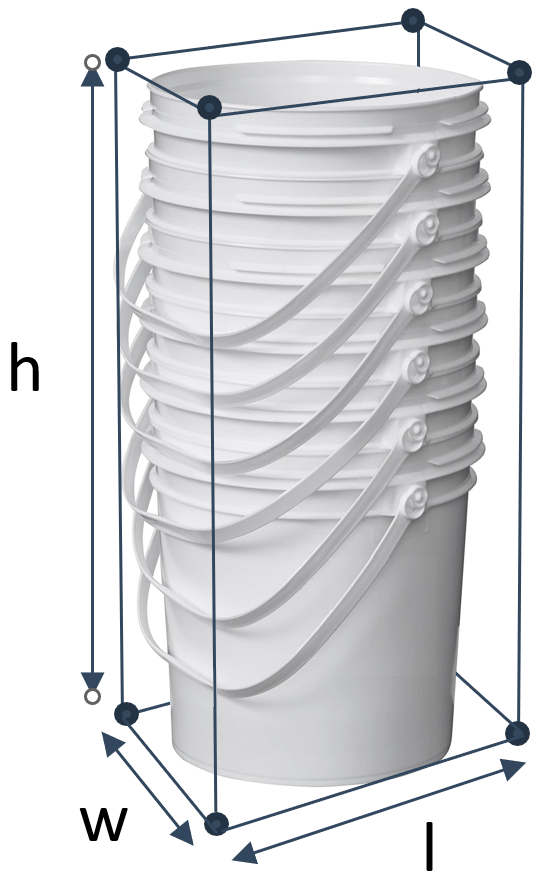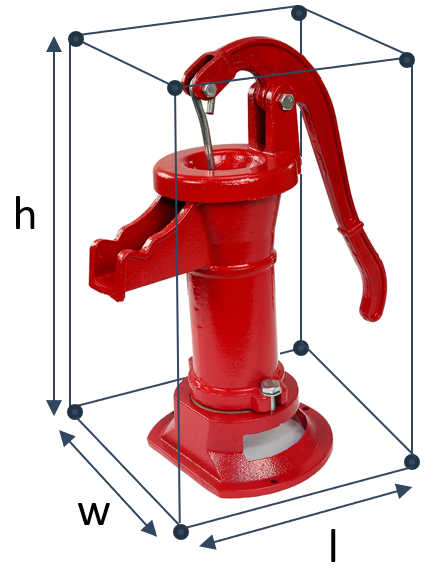Measuring Cargo for Transport and Storage
Measuring cargo for storage and transportation requires planners to imagine how those cargo items will realistically occupy space. Though as certain volume of liquid may be contained in a cylinder, the physical cylinder itself will still require additional "real" volumetric space. Real used volumetric space can always be envisioned as a measure of:
Due to the nature of storage facilities and transport facilities, it is helpful to imagine a box around any not cubic object, with edges at the longest and tallest points. The length of those imaginary edges will be used to plan volume for storage and transport.
Unit Type | "Real" Volumes for Storage and Transport | |
|---|---|---|
Boxes
|
To find the volume of regular boxes, multiply the width, length and height of the box along the outer edges.
|  |
Cylinders |
Though there's a formula for determining liquid volume in a cylinder, the volume for storage and transport is measured by the maximum length of it's edges.
|  |
Stacked or Nested Cargo |
If cargo will be shipped or stored stacked or "nested", measure the volume of all anticipated cargo items as they will ultimately be shipped or stored, nested into each other or stacked on top of each other. Do not account for the size of each individual unit.
|  |
Irregular Shapes |
The volume needs of irregular shapes will vary. Unless irregular cargo items are stacked in a pile, planner may need to view the total volume used to properly store or transport an irregular shaped item.
|  |
